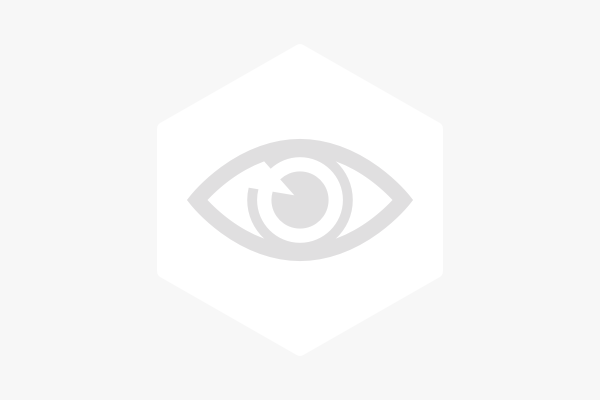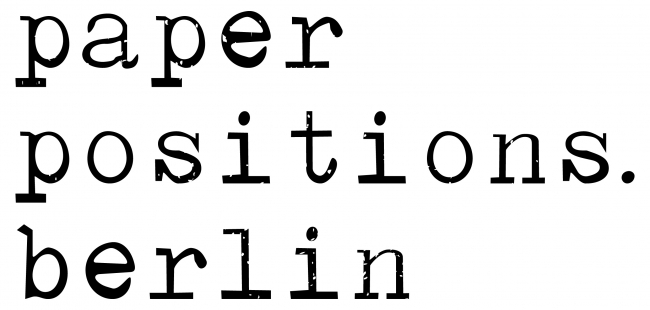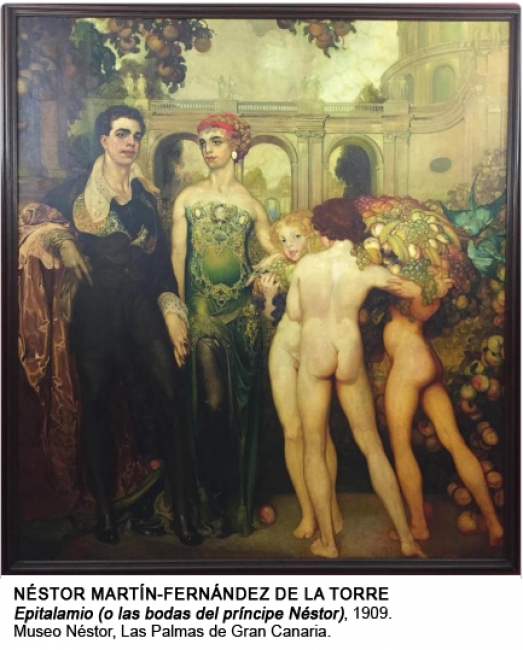Descripción de la Exposición
From 1-4 May 2025, paper positions berlin will present 65 galleries from 18 countries with outstanding positions of contemporary and modern art on and from the medium of paper. The ninth edition of the salon fair will take place for the first time in the impressive main hall of over 2,500 square metres in the iconic Berlin-Tempelhof airport. A historic location that evokes moments of freedom and departure in keeping with the material of the exhibits: Whether drawings, paintings, sketches, texts or expansive sculptures - paper positions reveals the versatility and creative potential of this fragile and spontaneous material.
City West. City Center. Tempelhof!
After a brilliant start at Bikini Berlin in 2017, paper positions berlin took place six times at the Deutsche Telekom Hauptstadtrepräsentanz from 2018 onwards. In 2020, it slipped into Berlin Art Week for one edition due to the pandemic and got its first taste of Tempelhof air in an airport hangar. This year's choice of the main hall as the location for the fair, on the other hand, was made deliberately and out of conviction: The former check-in hall was built in the course of the airport construction from 1936, was in operation until 2008 and was the representative centerpiece in the middle of the gigantic airport complex. This is where the journey began. The hall, clad in natural stone, forms an airy and clearly structured, almost museum-like setting for the presentations of works made from the delicate material of paper. An excellently suited location!
Paper. Paper. Paper.
Works on paper are characterized by their particular accessibility: Both in terms of size and price, they enable a broad public to enter the art market. As a result, paper positions berlin makes the acquisition of art particularly low-threshold - young people interested in art can acquire their first works, while experienced collectors have the opportunity to expand their art collections in a targeted manner.
Paper as an artistic medium offers an extraordinary variety: it serves as a smooth surface for fine pencil drawings, absorbs flowing ink or becomes a light background for dark charcoal. Paper can be cut, transformed into collages or processed into sculptural works. Despite its fragility, it is highly stable and thus opens up a broad spectrum of artistic forms of expression. For many artists, paper means a special freedom: it allows spontaneous working processes and experiments that often lead to particularly authentic and immediate works. At paper positions berlin, these works will receive the full attention of a specialized art fair audience that particularly appreciates the subtlety and complexity of the medium.
The artistic positions
Artworks by 208 artists from 36 nations will be presented at paper positions berlin in 2025. From Germany, France, Canada and Iran to South Africa, Georgia and Ecuador: the number of countries represented is as impressive as the diversity of artistic approaches to this fragile and versatile material. The international orientation makes the fair a lively venue for a global artistic dialog.
Artistic Highlights
Painter, sculptor, photographer, filmmaker, draftsman,... Man Ray (1890–1976) has never limited himself to a single medium of artistic expression, tirelessly seeking new possibilities of creation or diversion of existing techniques. Considering art essentially as a game, he refused to attach himself to a determined style. With Marcel Duchamp he created and experimented with optical devices to study motion. At this time in his career he originally created the series Revolving Doors as colored paper collages. Ray participated in the Dada movement in New York until 1921 when he left for France. In Interwar Paris, Man Ray interacted with many of the greatest creative figures: Dadaists, Surrealists, writers, filmmakers and fashion designers. After leaving for the United States in 1940 where he realized major works, Man Ray returned to Paris in 1951, moved to rue Férou where he painted, drew, wrote his memoirs and continued to use photographic processes.-> Eva Meyer Gallery (Paris)
Yael Bartana (*1970) is an observer of the present and a progressive thinker. She uses art as a scalpel in the mechanisms of power structures and walks the fine line between sociology and imagination. In her films, installations, photographs, staged performances and public monuments, she explores themes of national identity, trauma and displacement, often through ceremonies, memorials, public rituals and collective gatherings. Bartana created ‘Ascending’ specifically for her solo exhibition at Galerie Wannsee Contemporary. Inspired by the work of Gustave Doré, by inverting and inserting her spaceship in place of the Christ figure, she poses topical questions relating to salvation through the search for solutions to the problems on our planet in outer space.-> Wannsee Contemporary (Berlin)
Alphée Ballester (*1981) lives and works between the hustle of Paris and the calm of Cher. In response to a rapidly changing world, Alphée reconnects with contemplation and restores the place of daydreaming. She weaves subtle links between human vulnerability and the fragility of nature, creating an inner climate map that mirrors our planet. Her emotions, whether they are daily or triggered by the tremors of current events (earthquakes, wars, climate change), come to life on the canvas. In her world, where mixed techniques dance with abstraction, Alphée unveils her inner weather. With care, she cuts or tears delicate handmade papers, transforming each piece into a narrative background.
The nervous gestures of oil paint blend with acrylic textures, while the pencil draws meditative grids, and cloth bandages cover areas, bringing a healing tenderness. Her artistic vocabulary, where softness flirts with violence, reveals states of mind that are sometimes peaceful, often tumultuous, but always imbued with a vital force that magnifies the beauty of the world.
-> Nadia Arnold Gallery (Villars-sur-Ollon)
Bettina Hutschek (*1977) is an artist and filmmaker who deals with questions of historiography in her work. She examines narratives, forms of knowledge transfer and the influence of images and language on collective experience. In this way, she usually develops complex artistic analyses of contemporary phenomena and creates imaginary worlds and narratives ‘extended history’. Her typewriter drawings and collages are created in a concentrated, spontaneous act, whereby she sometimes humorously, sometimes aesthetically, but always experimentally deals with the elements of writing and image.
-> Augsburg Contemporary (Augsburg)
Mathias Malling Mortensen (*1980) is a self-taught visual artist working with painting, paper cuts and graphics in an intuitive, minimalistic and non-figurative style. He has developed a signature style of ‘cut-out’ image production by blending elements of painting and collage with a sculptural approach towards the pictorial plane. Often working with vibrant monochromatic colour fields and layered sections of paper or canvas, Mortensen explores how colour, texture and negative space can be manipulated to produce enigmatic and suggestive compositions. His work is grounded in a long-term project of spatial research.
-> Jacob Bjorn Gallery (Aarhus)
Leonid Keller's works deal with images that are deeply rooted in our collective visual memory. They refer both to historical images of political events and social structures and to everyday symbols that convey a sense of cultural belonging. The Berlin-based artist duo, consisting of Julia Ossko (1978) and Eugen Schulz (1984), combine these visual elements to create multi-layered installations. A central element of their artistic practice are works on paper, in particular collages and drawings. For their collages, they use an archive of international magazines and illustrated books that they have built up over the years and which offers a multitude of visual stimuli. In addition, they create large-format graphite drawings that further transform the visual material. Taken as a whole, the works open up a space in which the interactions between image perception and cultural identity are reflected upon and questioned.
-> the Curve (Berlin)
Raul Meel (*1941) is a renowned Estonian painter, graphic artist, sculptor, installation and fire-performance artist, as well as a concrete, visual, and sound poet. Meel has dedicated much attention to the materiality of language – to its shapes, proportions and rhythms. He has published 250 concrete poetry, visual poetry and sound poetry books and more than 50 albums in different languages. During the Soviet era, he was considered a persona non grata in the local art context, while being known beyond the Iron Curtain. "Singing Tree" is a typewritten drawing consisting of words (bird and land), the impact of which is determined by the interrelations between different systems of symbols (text and visual images). During the heyday of graphic art in Estonia (1962–1980), he was the only Estonian artist who was a member of the International Club of the Prize Winners of the International Print Biennials.
-> Flash Art Gallery (Tallinn)
Janosch Dannemann (*1992) works exclusively on paper. His drawings - executed in colored pencil - arise primarily from improvisation: a game of action and reaction between the artistic decision, its mistakes and their inevitable influence on all decisions that follow. Each sketch is inconsequential; instead, the motifs develop from an abstract background to a miniature stage and gradually fill up with a small, motionless spectacle. All of this is based on a fascination for the drawn line and the paper that supports it - regardless of whether it was constructed with experienced precision or torn out with a child's clenched hand.
-> Leuenroth Gallery (Frankfurt a. Main)
Susanna Inglada (*1983) makes highly expressive collaged drawings of people engaged in intense, sometimes even violent interaction with each other. She first studied drama in Barcelona before dedicating herself entirely to visual arts studies in Spain, the Netherlands and Belgium. Her work therefore has a strong theatrical quality. She also makes spatial installations in which she places the figures in space as actors on a stage. The viewer is thus included in the interaction and confronted up close with the emotions of the figures.
Susanna Inglada uses the collage technique, on paper with different colours she draws the parts with charcoal, which she then cuts out and assembles until the figure is created. In recent years she has shifted the focus in her work to the role of women, gender and motherhood.
-> Maurits van de Laar Gallery (The Hague)

Exposición. 25 abr de 2024 - 28 abr de 2024 / Telekom Hauptstadtrepräsentanz / Berlin, Alemania

Exposición. 27 abr de 2023 - 30 abr de 2023 / Telekom Hauptstadtrepräsentanz / Berlin, Alemania

Exposición. 28 abr de 2022 - 01 may de 2022 / Telekom Hauptstadtrepräsentanz / Berlin, Alemania
Ver los 5 eventos relacionados

Premio. 11 abr de 2025 - 16 may de 2025 / Bilbao, Vizcaya, España
Ayudas 2025-26 para la realización de proyectos artísticos con cesión de estudio en Bilbao Arte

Exposición. 14 may de 2025 - 08 sep de 2025 / Museo Nacional Centro de Arte Reina Sofía (MNCARS) / Madrid, España

Formación. 30 oct de 2025 - 11 jun de 2026 / Museo Nacional del Prado / Madrid, España